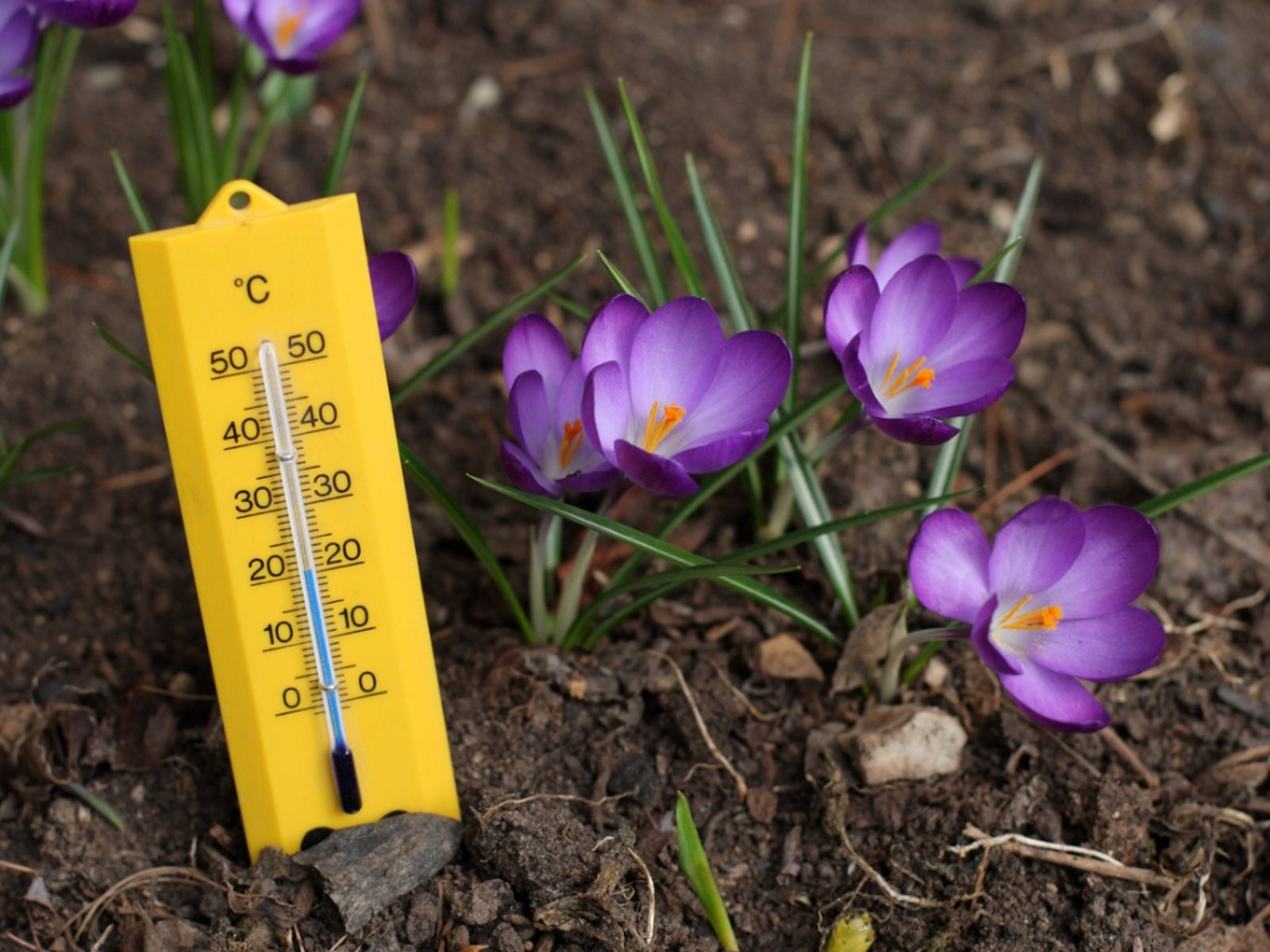Soil Temperature Gauges - Tips For Determining Current Soil Temperatures


Soil temperature is the factor that drives germination, blooming, composting, and a variety of other processes. Learning how to check soil temperature will help the home gardener know when to start sowing seeds. Knowledge of what is soil temperature also helps define when to transplant and how to begin a compost bin. Determining current soil temperatures is easy and will help you grow a more bountiful and beautiful garden.
What is Soil Temperature?
So what is soil temperature? Soil temperature is simply the measurement of the warmth in the soil. Ideal soil temperatures for planting most plants are 65 to 75 degrees F. (18-24 C.). Nighttime and daytime soil temperatures are both important. When are soil temperatures taken? Soil temperatures are measured once soils are workable. The exact time will depend upon your USDA plant hardiness zone. In zones with higher numbers, the soil temperature will warm up quickly and earlier in the season. In zones that are lower, the soil temperature may take months to warm up as winter chill wears off.
How to Check Soil Temperature
Most people don't know how to check soil temperature or what tools are used for taking accurate readings. Soil temperature gauges or thermometers are the common way to take the reading. There are special soil temperature gauges used by farmers and soil sample companies, but you can just use a soil thermometer. In a perfect world, you would check nighttime temperatures to ensure they are not so cold your plant's health will be impacted. Instead, check in the early morning for a good average. The night's coolness is still mostly in the soil at this time. Soil readings for seeds are done in 1 to 2 inches (2.5-5 cm.) of soil. Sample at least 4 to 6 inches (10-15 cm.) deep for transplants. Insert the thermometer to the hilt, or maximum depth, and hold it for a minute. Do this for three consecutive days. Determining soil temperatures for a compost bin should also done in the morning. The bin should maintain at least 60 degrees F. (16 C.) bacteria and organisms to do their work.
Ideal Soil Temperatures for Planting
The perfect temperature for planting varies is dependent upon the variety of vegetable or fruit. Planting before it is time can reduce fruit set, stunt plant growth, and prevent or reduce seed germination. Plants such as tomatoes, cucumbers, and snap peas benefit from soils at least 60 degrees F. (16 C.). Sweet corn, lima beans, and some greens need 65 degrees F. (18 C.) Warmer temperatures into the 70's (20's C.) are required for watermelon, peppers, squash, and at the higher end, okra, cantaloupe, and sweet potatoes. If you are in doubt, check your seed packet for ideal soil temperatures for planting. Most will list the month for your USDA zone.
Realistic Soil Temperatures
Somewhere between the minimum soil temperature for plant growth and the optimum temperature is the realistic soil temperature. For instance, plants with higher temperature needs, such as okra, have an optimum temperature of 90 degrees F. (32 C.). However, healthy growth can be achieved when they are transplanted into soils of 75 degrees F. (24 C.). This happy medium is suitable for beginning plant growth with the assumption that optimum temperatures will occur as the season progresses. Plants set out in cool zones will benefit from late transplanting and raised beds, where soil temperatures warm up more quickly than ground level planting.
Sign up for the Gardening Know How newsletter today and receive a free copy of our e-book "How to Grow Delicious Tomatoes".

Nikki Tilley has been gardening for nearly three decades. The former Senior Editor and Archivist of Gardening Know How, Nikki has also authored six gardening books.